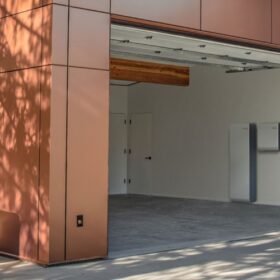After the worst recession in the last hundred years, Joe Biden wants to “build back better.” And that includes a large focus on green energy and transportation. I’ll take a look at his new plan and focus on a few items that seem to have the most promise.
It’s a campaign document so let’s all accept from the outset that it means very little in itself. What will matter is legislation advanced by a Biden administration that actually gets through Congress (and House Democrats do in fact have their own climate plan and passed a bill recently to implement that plan, which has zero chance of passing into law in 2020).
But let’s set aside skepticism for a moment and look at the merits of Biden’s suggestions.
Here’s the bullet point summary:
- Build a Modern Infrastructure
- Position the U.S. Auto Industry to Win the 21st Century with technology invented in America
- Achieve a Carbon Pollution-Free Power Sector by 2035
- Make Dramatic Investments in Energy Efficiency in Buildings, including Completing 4 Million Retrofits and Building 1.5 Million New Affordable Homes
- Pursue a Historic Investment in Clean Energy Innovation
- Advance Sustainable Agriculture and Conservation
- Secure Environmental Justice and Equitable Economy Opportunity
The biggest shift from Biden’s previous plans involves the money and timeframe for spending it: $2 trillion over four years, rather than the $1.7 trillion over ten years that Biden had previously proposed. Gaining support for this level of spending after the U.S. incurs up to $10 trillion in new debt in 2020 alone, in mitigating the effects of the pandemic, will be a massive lift for a Biden administration. But let’s set that concern aside for now.
The most exciting and potentially far-reaching part of the plan to me is a call for 100% green energy by 2035 nationwide. That’s super-ambitious but also, in my view, achievable. It may even be achieved by market forces alone because solar, wind, and battery storage are all getting so cheap (with the latter still pricey but steadily coming down in price).
But a federal and state policy focus on the green energy transition will in general help. Biden’s plan is short on specifics about how this ambitious goal will be achieved but if it includes a federal “clean energy standard” (CES) (or what the plan calls an “energy efficiency and clean electricity standard”) like that proposed in many past Democratic bills it could achieve some real progress on the ground.
Federal CES bills have in the past set goals for each state as a floor but not a ceiling. And some have provided various incentives. Biden’s plan calls for extending various incentives for green energy beyond their existing sunset dates, and this will do much to accelerate the transition.
Another key piece of an effective RES would be to revamp the federal PURPA law to require states to enact new feed-in tariffs for predictability and program stability – things that have been sorely lacking over the years. That’s not in the plan but let’s hope it gets on the agenda in a Biden administration.
In addition to the CES proposal Biden’s plan would reform and extend tax incentives for energy efficiency, clean energy and clean energy jobs. This is probably the biggest single thing that Biden could do and it doesn’t technically cost anything because it simply allows tax dollars to stay in the pockets of those developers and industries who qualify for the tax breaks.
Biden’s plan calls for a new Advanced Research Projects Agency on Climate, to target “affordable, game-changing technologies to help America achieve our 100% clean energy target.” That’s just common sense, in my view, and I support this new focus.
The plan also calls for creating a Civilian Climate Corps. I can’t agree with this more. This is exactly the kind of thing we need to employ youths and able-bodied people of all ages in productive areas for planting trees, creating new trails, installing solar panels everywhere they make sense, being trained as technicians in all aspects of green energy and green agriculture. Three thumbs up.
The plan also sets a goal for disadvantaged communities to receive 40% of overall benefits of spending under the plan. I’m more torn over this. I recognize the equity and good politics of this approach, but as I’ve argued in some of my energy policy work in California, we shouldn’t focus such investments in communities if there’s little chance of utilization. But it seems like the large majority of investments under Biden’s plan will be productive and utilized in any community, so I support this focus even if the percentage seems high to me – perhaps 25% is a better figure?
Biden’s plan includes a focus on sustainable agriculture, which also makes a lot of sense from a climate and also a resiliency and air pollution perspective. Having more food produced locally and sustainably, providing healthy jobs that give us more connection to our land and community, can’t be seen as anything but beneficial – unless you’re part of Big Ag.
Last, the plan includes some discussion of EVs and electrification, but not enough in my opinion. I’ve held the view for a few years now that the renewable electricity transition is effectively here already. Not here here, but here in terms of being visible just over the horizon in a way that we know it’s coming and taking over in the next couple of decades.
The degree to which we can say the same about green transportation is far less clear. The growth of long-range EVs in the market, with almost 8 million EVs on the road now around the world, and battery costs coming down steadily even as vehicle range increases steadily, is all very encouraging. But we’ve got a much bigger lift on our hands with the EV transition because cars have about a 15-year lifetime. So even when 100% of all new car sales become EVs (let’s say by the early 2030s), it will still take another 15 years for the fleet to become fully green or EV.
Biden’s plan calls for investing in 500,000 EV charging stations, which makes very good sense, but I also want to see a “clean vehicle standard” like the CES as part of this plan, something like “80% of all new passenger car sales will be EVs or clean vehicles by 2030.” Market forces may well do the trick anyway, but for this plan to be equivalently ambitious in all areas there should be more quantified targets in the tougher-nut transportation sector than it currently contains.
So, in sum, there’s a lot to like in this plan, very little to dislike, and a few things that future iterations should include – or, better yet, future bills in a new Congress in 2021 will include, and pass into law.
The views and opinions expressed in this article are the author’s own, and do not necessarily reflect those held by pv magazine.
This content is protected by copyright and may not be reused. If you want to cooperate with us and would like to reuse some of our content, please contact: editors@pv-magazine.com.








The most important thing any candidate for office can do – possibly the most neglected – is to teach from the campaign trail. Biden can refuse to give air to the deniers whose root claim is that clean energy is expensive, by including assumptions about cheaper energy and saving money in his words.
Most people, including most environmentalists – assume falsely that ending fossil fuels requires some increased cost. In the past this would have been defensible, if you neglected the steady downward track of cost for wind and solar. In late 2017 all utility wind and solar became so much cheaper that it is now possible to build new wind and solar and displace existing fossil and nuclear power in 90% of the world’s power generation.
The virus creates opportunities we should not neglect. Most of the world has seen skies that were not so clean since the 1960’s. Without getting into the details of pollution (except to mention that the U.S. has done a terrific job of limiting visible pollution, but not very good at limiting the fine particulates which kill the most people) it is now cheaper to eliminate all of this pollution entirely than it is to continue to die from it, or to spend billions of dollars every year treating the hundred million or so respiratory events treated by doctors after air pollution events world wide every year.
Biden could introduce this knowledge to the public. Better if some responsible voices would do so for him. We need economic growth in the wake of the virus. We need to lower the causes of health problems which the virus clearly attacks more aggressively. We need the clear skies the virus has given us a glimpse of. And if there is a single power plant in the world which uses fossil fuel or nuclear power that is cheaper to run than new utility scale wind and solar plants, let’s eliminate all the others and figure out what we want at that point.
Most likely, in the decade or two it takes to eliminate all those plants, wind and solar will get cheaper, and those plant will get more expensive.
Solar advocates need to be more respectful of the price differential between utility scale solar and rooftop solar. Solar advocates need to be more cognizant of the likelihood that wind will serve more than solar, because storage, while cheap enough to permit 100% renewables, is still more expensive than fitting renewables to consumption.
Please don’t take this wrong. I’m not scolding anyone. There is time enough for that after we’ve ended the deadly tragedy that future generations will regard the fossil fuel era as. We just need sharp focus on the economics, because that is what drive this world, this species and this issue. Biden has given us a better starting point than any previous leader I can think of, but like Clinton, who told environmentalists, after he was first elected, “now give me the support to make some of these things possible”, the President does not operate in a vacuum.
Perhaps a follow-up article asking “What WE can do to help a clean energy President get elected” would help. My computer shows that I’m making the first comment to this article. If that’s true, we need more engagement, because I’m reading this late.
As you mentioned, I would also like to see something that speaks to net metering on a national level along with how existing allocated money is spent on grid maintenance.
Regarding Net Metering, it has been the efforts by monopoly power companies on a state level that have held back the rooftop solar industry and negated the value of the ITC. This is where I would like to see a blanket net metering policy (one-for-one) on a national level with a 15% market cap penetration/state.
This is connected to the second part of a national mandate that I mentioned.
Every year, a certain amount of money is allocated for grid maintenance by a state’s monopoly power company. This money can be spent in one of two ways. Currently, it is spent on the same technology/components to replace the old ones, specifically speaking to transformers and substations. This same money could be spent on new technology to replace the old that will allow the grid to handle a more bidirectional flow of energy that is a result of rooftop solar and distributed generation.
If this was happening as more rooftop solar is added to the grid, it would in turn be modifying an antiquated grid to allow distributed generation to go beyond the 15% proposed, allowing the grid to be reassessed as it evolves to go well beyond the 15% cap.